A field test was conducted by ECOBETON Deutschland GmbH in cooperation with STRABAG Hamburg to verify how Vetrofluid, a deep-penetrating concrete protector, can prevent rain damage within minutes of application.
Protecting freshly poured concrete from unexpected rain is a recurring challenge on construction sites. Rainwater mixing with the unset cement paste can weaken the surface, wash away cement fines, and create a fragile sinter layer with poor bonding and low resistance to abrasion.
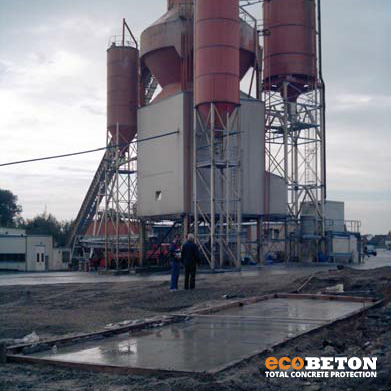
Location: Hamburg, Germany
Client: STRABAG
Product Tested: EverCrete Vetrofluid
Concrete Mix: B35 KP 22 B II with LP
Surface Area: ~20 m²
Conditions: 13–17°C, humidity from 60% to 73%
Pouring concrete
Application of Vetrofluid
Light rain after 15min
Intense rain after 30min
Heavy downpour after 60min.
After 120min - longest and most intense rain
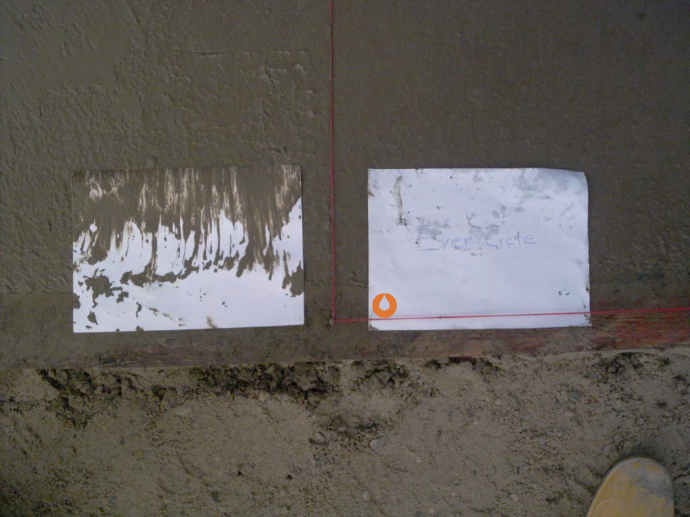
The Paper Test
At 12:55 — just 15 minutes after applying Vetrofluid — we ran a simple experiment.
We dragged sheets of paper across both treated and untreated surfaces. The untreated side smeared wet cement paste all over the paper. But on the Vetrofluid side? Clean. Dry. Already sealed.
That’s when we knew something special was happening.
Simulating the rain
To make things more interesting, we brought in a pressure hose and created our own storm. Four rounds of simulated rain, at 15, 30, 60, and 120 minutes after pouring.
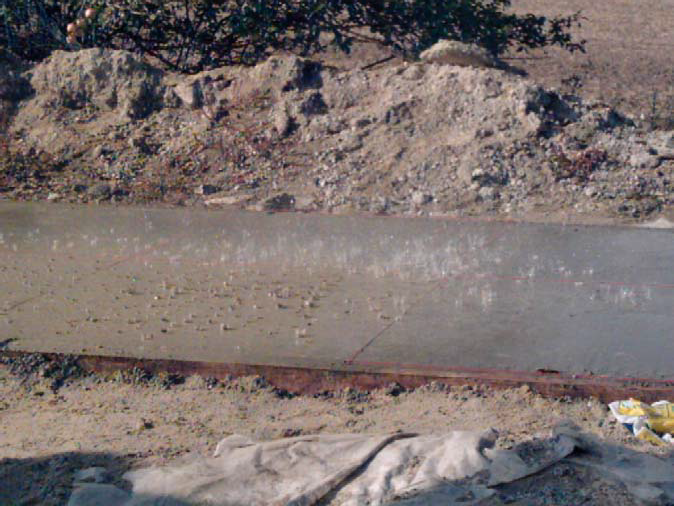
First rain – 15 minutes in:
The untreated area turned into slurry.
The Vetrofluid side held firm. Water pooled on top, but the surface stayed crisp.
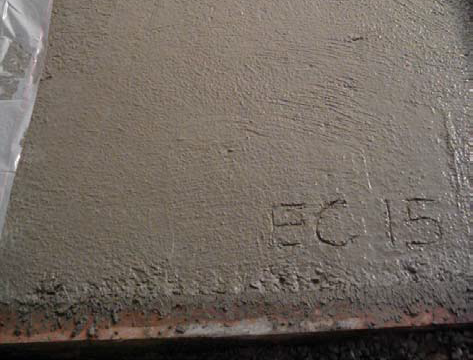
Structured and Strong – Right Before the Storm
This is the test surface moments before the simulated rain. The concrete has been freshly poured and treated in specific zones. The structure is clean, well-defined, and the EC15 marking is sharply visible. This is the control state — the moment before nature (or our hose) put it to the test.
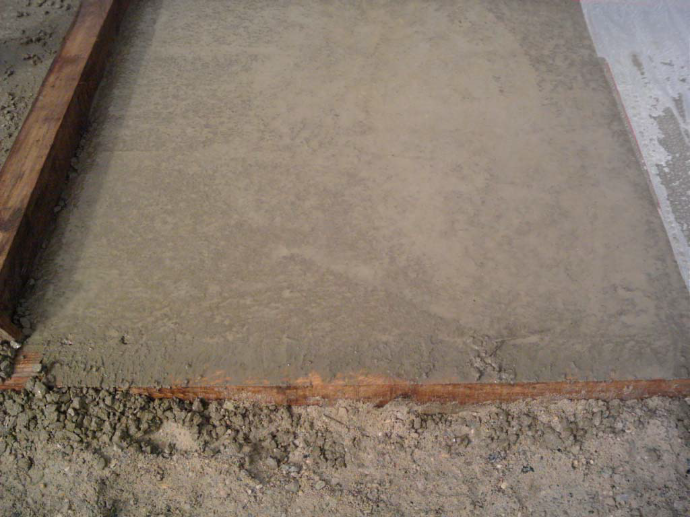
Washed Out – When Concrete Faces Rain Unprotected
This surface was left untreated. After just 15 minutes of setting concrete we commenced a controlled downpour, the rainwater mixed with the fresh cement paste, washing away the surface structure. The texture has dissolved, and even the EC15 marking is now completely lost. What remains is a weakened layer — soft, fragile, and destined to fail under stress. This is what a single unexpected rain can do.
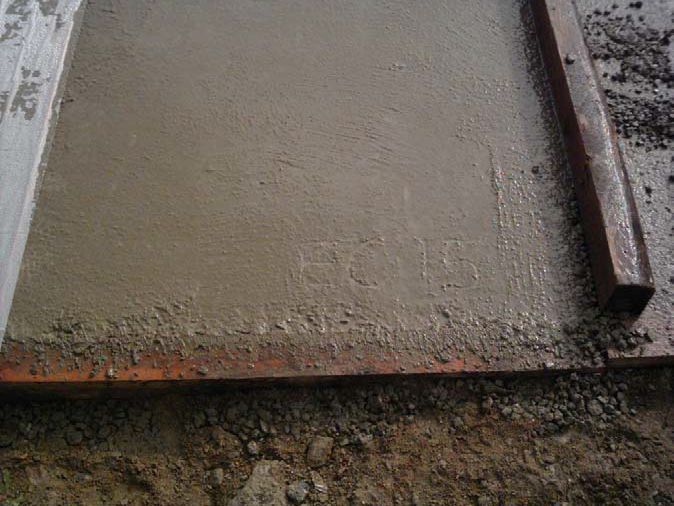
Still Standing – Vetrofluid Holds the Line
Vetrofluid was applied just 15 minutes after pouring concrete, Despite the same rain exposure, the surface remained intact. Clear water stands on top without penetrating, and the original texture is fully preserved. Vetrofluid formed a protective barrier with the cement paste almost immediately — resisting erosion, sealing the capillaries, and keeping the strength where it belongs: in the concrete.
Second round – 30 minutes later:
After 30min from pouring concrete, second test was commenced, this time downpour was more intense, and there was more water. Below pictures of test surface, untreated on the left, and treated with Vetrofluid on the right, before simulated rain.
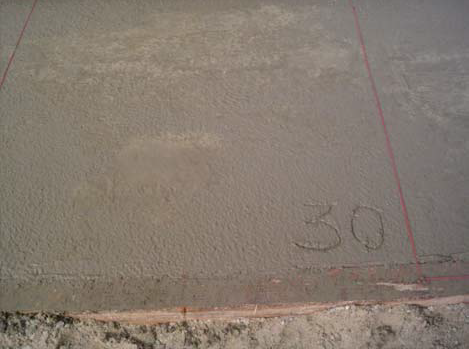
Untreated surface
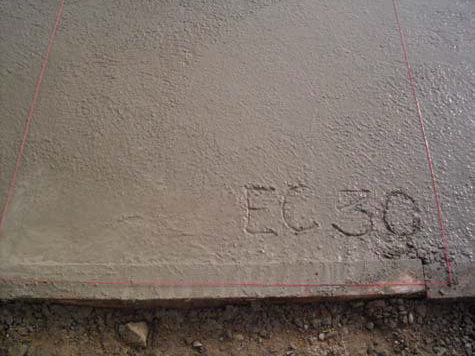
Treated with Vetrofluid
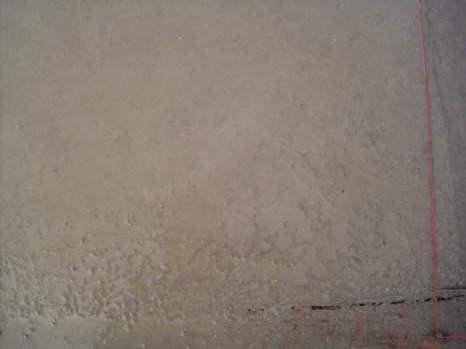
After simulated rainfall, the damage is clear. The surface structure has completely vanished. The marking "30" remains the only hint of what this concrete once looked like. Rainwater mixed with the still-active concrete paste, breaking down its cohesion and even causing small holes to form. This is a textbook case of how unprotected concrete can suffer — even from just one sudden shower.
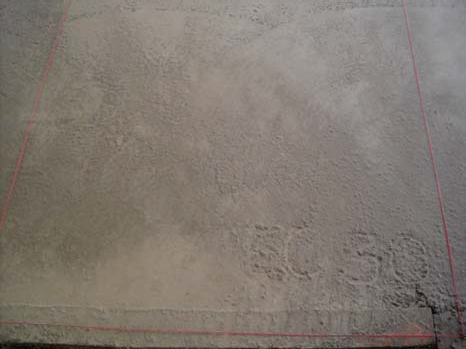
Despite the same volume of rainfall, this surface, treated with Vetrofluid just 30 minutes earlier, shows no structural compromise. The imprint "EC 30" remains sharp and legible. The surface texture is still clearly visible, and the rainwater simply beads and rests on top — it has not penetrated. Vetrofluid bonded early with the cement paste, forming a protective shield that locked out the rain before it could do any damage.
At 13:40, (60min after pouring concrete) the third round of simulated rain was carried out, this time with an even greater volume of water. The results? Almost identical to those after 30 minutes.
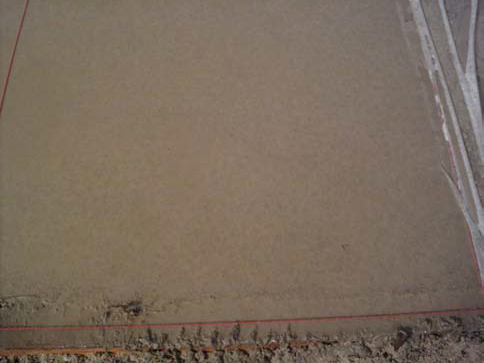
Untreated Surface – No Resilience
Once again, the untreated concrete fails. With the rain now stronger, the surface has lost all definition. Any texture that was once there is now gone. The rain mixed freely with the unset cement, worsening the damage and leaving a fragile, eroded layer behind.
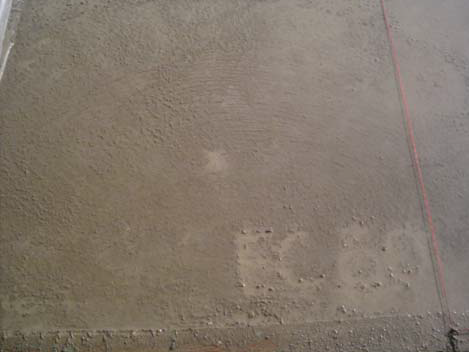
Vetrofluid-Treated Surface – No Compromise
Despite the intensified rainfall, the area treated with Vetrofluid shows no signs of distress. Water remains clean on the surface without mixing in. The texture holds. Vetrofluid has created a barrier that continues to shield the concrete even as conditions worsen.
✅ Conclusion: Vetrofluid – Proven Rain Protection for Fresh Concrete
When it comes to protecting fresh concrete from rain, there’s no room for guesswork. As this real-world test with STRABAG in Hamburg clearly demonstrated, Vetrofluid offers immediate and lasting protection — starting just 15 minutes after application.
While untreated concrete suffered visible erosion, surface loss, and structural weakening after simulated rain, Vetrofluid-treated surfaces remained intact, defined, and durable. From the first shower to simulated storm conditions two hours later, Vetrofluid delivered unmatched rain resistance without the need for covers, delays, or rework.
This isn’t just surface sealing — it’s a chemical transformation inside the concrete, forming a crystalline structure that blocks water, enhances curing, and prevents future damage.